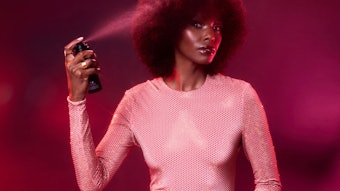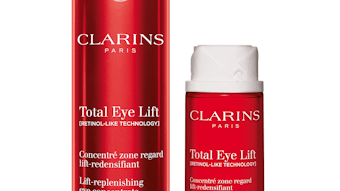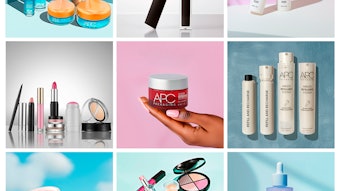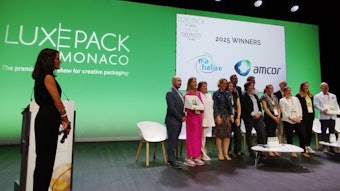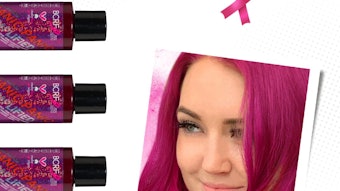For decades, anyone who wanted insight into the cosmetics and toiletries market looked to the French consumer. France, the international hub for the beauty industry, has historically been the global pacesetter for cosmetics and toiletries. Even in the down economy, France retained its leading position in the global cosmetics industry, with nearly 25% market share worldwide.
Packaging has always played a critical role in brand recognition in beauty, and as the global beauty industry emerges from the recent recession, what trends and insights can brand owners and packaging manufacturers learn from French consumers now so that they can leverage these insights for the future?
MWV, for example, gleans insights from Parisian consumers in order to support advances of its beauty and personal care customers in 2011. Late in 2010, MWV conducted considerable research in Paris, as well as New York, regarding consumer preferences for airless dispensing systems for facial moisturizers and anti-aging skin care. The following implications arose from MWV’s research in Paris, and provides insight for global brand owners to consider in 2011.
The Insights
Masstige brands benefit when they look like prestige brands. The economy forced consumers worldwide to change how they shopped for products, including beauty products. Even the French consumer made changes to her buying patterns for coveted beauty and personal care purchases. A 2009 Mintel report found that French women are the most dedicated to their beauty products, with 12% saying they cut back on other things to keep buying their favorite products. By comparison, less than one in 10 consumers in the U.S. and U.K. said the same.
However, the same report showed that French women are exceptionally frugal, noting that they prefer to wait until their products are on sale before purchasing them. Taking frugality into consideration, masstige brands in the market have an opportunity to capture more business from price-sensitive consumers in the market—ones who would have previously bought beauty and personal care products from a department store or specialty retailer.
Packaging can play a key role in capturing these consumers’ attention, if the package’s design mirrors the look and feel of prestige brands in the marketplace. Brand owners should consider using decorative effects or coloration to help masstige brands resemble prestige counterparts. These steps will capture the aspirational consumer—one who wants the chic prestige product but is not willing to pay for the brand.
Beautiful packaging captures consumers’ eyes—and wallets. In both the U.S. and Europe, MWV has studied the notion of “counter worthiness”—meaning why consumers choose to display certain beauty products on their shelves or counters. MWV has found that beautifully designed packages often end up on a consumer’s bathroom counter or shelf so that she can see them constantly.
Brands that end up in a visual place often get used more—which means that the consumer will often have to replace the product more often. MWV’s research showed that women in Paris prefer tapered, feminine shapes for their products, and also prefer the look of glass jars vs. plastic. This insight yields two separate takeaways for brand owners to evaluate in 2011. First, brand owners should pay close attention to beauty when designing packaging. Pay attention to the sleek shape and other decorative effects that glass jars and dispensers afford, and work with a reputable packaging manufacturer to determine how to make this format appropriate for masstige skin care applications.
Next, the insight provides a real opportunity to help educate consumers on more hygienic packaging options than jars. Take airless pumps and dispensers, for instance. Airless dispensers fully protect the formulation from contact with oxygen, which ultimately preserves the efficacy of the product. Plus, because the consumer only comes in contact with the formulation when it is actually dispensed, the product is not routinely compromised by any oils or residues on the hands.
Additionally, European consumers have a strong interest in natural beauty and personal care products, and the market for organic and eco-friendly beauty products continues to grow—and is anticipated to outpace overall packaging over the next several years. However, there could be greater attention by industry players to the best packaging option for these natural products. [The January/February feature Doing More with Less and the November 2010 feature Sustainable Innovation touch on the subject of packaging natural products.]
Opportunities
MWV has identified airless dispensing systems as ideal packaging options for natural products, due to the sensitive nature of natural formulations. MWV, for instance, leverages its Pure Path Technology in its Aria, Prelude and Adagio airless dispensers. The technology includes a metal-free fluid pathway that ensures protection for a wide variety of high-viscosity, oxygen-sensitive cosmetic and personal care products.
MWV’s Pearl and Pearl Mini airless dispensers leverage a slightly different innovation designed to protect the product’s integrity: Rolling Bellow Technology—which leverages one single silicon piece that combines several functions. It notably replaces the metal spring, made possible by its unique design, so the product does not contact metal.
Packaging should also be carefully considered when developing cosmeceuticals. Cosmeceuticals (cosmetic applications that contain highly sophisticated or complex formulations in order to provide pronounced benefits to the consumer) are quickly rising in popularity in Europe and the U.S. Euromonitor International research found that anti-aging products that could be defined as cosmeceuticals accounted for 23% of the total global skin care market in 2008, and grew faster than any other product type within the beauty sector.
As cosmeceuticals rise in popularity, careful consideration must be paid to packaging. Since cosmeceuticals are perceived to have a medicinal or healing element, it seems natural to design packaging that has a more pharma-driven look and feel. MWV’s research showed that European consumers shied away from cosmeceutical packaging that too closely resembles syringes or vials. MWV believes brand owners would be better suited by evaluating the right airless dispensing system that reinforces the medicinal aspect of the product but ensures a look and feel that more closely resembles a beauty product.
While the global landscape for the beauty industry is constantly evolving, packaging will always remain a critical aspect of a brand’s image and allure. Brand owners will be best served by paying attention to consumer trends and insights from savvy and progressive shoppers, like French consumers, in order to advance their brands in 2011 and beyond.
Based in Barcelona, Eva Martin Fernandez is MWV’s marketing manager in Europe for personal care products. MWV is a leading supplier of fragrance, personal care and cosmetic dispensing solutions with high quality sprayers and pumps. www.mwv.com
